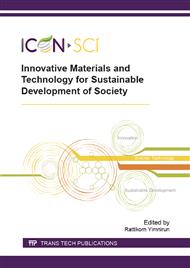p.183
p.187
p.191
p.195
p.199
p.203
p.209
p.213
p.217
DNA Biosensor on Optical Nanograting Structure
Abstract:
We present a nanograting optical biosensor device, fabricated by photolithography, which is sensitive to changes in refractive index at the sensor surface. via changes in the reflectivity spectra. The grating was created by etching of a silicon nitride (Si3N4) film, which has a refractive index of 2.01, resulting in an array of Si3N4 pillars. The grating was coated by the high quality spin on glass material which has a low effective refractive index <1.50. The surface was functionalised with a layer of probe biomolecules for specific binding of the target DNA. Immobilization of the probe molecules was carried out via streptavidin – biotin interaction, the biotin modified ssDNA oligonucleotide probes were 23 bases in length (1010 copies/μl) and the sequence of the complementary ssDNA was 5’-TAC TCA TAC TTG AGG TTG AAA TT-3’(10, 100 and 1000 copies/μl). Results of the experiment showed that when molecules attached to the surface of the device, the position of the reflectance spectrum shifted due to the change of the optical path of light that is coupled into the nanograting structure. The extent of the wavelength shift (Δλ) of the peaks could be used to quantify the amount of materials bound to the sensor surface.
Info:
Periodical:
Pages:
199-202
Citation:
Online since:
October 2015
Authors:
Keywords:
Price:
Сopyright:
© 2015 Trans Tech Publications Ltd. All Rights Reserved
Share:
Citation:


